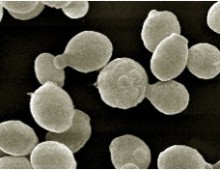Genomic analysis of self-fertilizing fungi
Filamentous fungi help decay plant material, a process which has applications for producing biofuels and other products. The model organism for filamentous fungi is Neurospora tetrasperma. Neurospora tetrasperma rosette (Image by Namboori B. Raju, Stanford University) Selected for the DOE JGI’s 2007 Community Sequencing Program, the fungi is of interest to researchers such as studying… [Read More]
